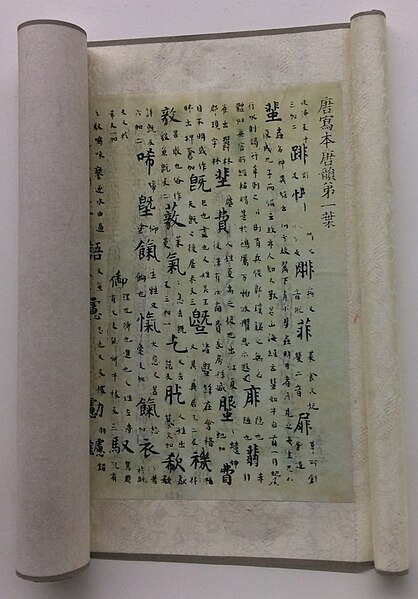A rime dictionary, rhyme dictionary, or rime book is an ancient type of Chinese dictionary that collates characters by tone and rhyme, instead of by radical. The most important rime dictionary tradition began with the Qieyun (601), which codified correct pronunciations for reading the classics and writing poetry by combining the reading traditions of north and south China. This work became very popular during the Tang dynasty, and went through a series of revisions and expansions, of which the most famous is the Guangyun (1007–1008).
Copy of the Tangyun, an 8th-century edition of the Qieyun
Copy of fragments of the Wang Renxu edition of the Qieyun
Sea of Characters, level tone folio 53
Image: Guangyun Dong Rhyme 1
There are two types of dictionaries regularly used in the Chinese language: 'character dictionaries' list individual Chinese characters, and 'word dictionaries' list words and phrases. Because tens of thousands of characters have been used in written Chinese, Chinese lexicographers have developed a number of methods to order and sort characters to facilitate more convenient reference.
A page from the 1865 reprint of Morrison's Chinese dictionary, the first major Chinese–English dictionary. In this section, words are arranged alphabetically based on Morrison's transcription of Chinese.





